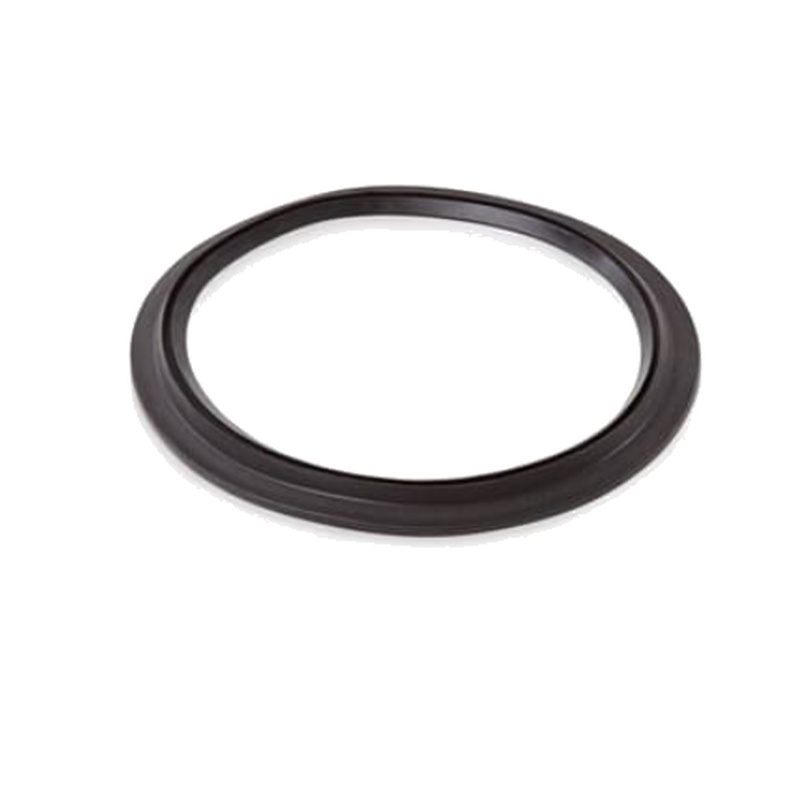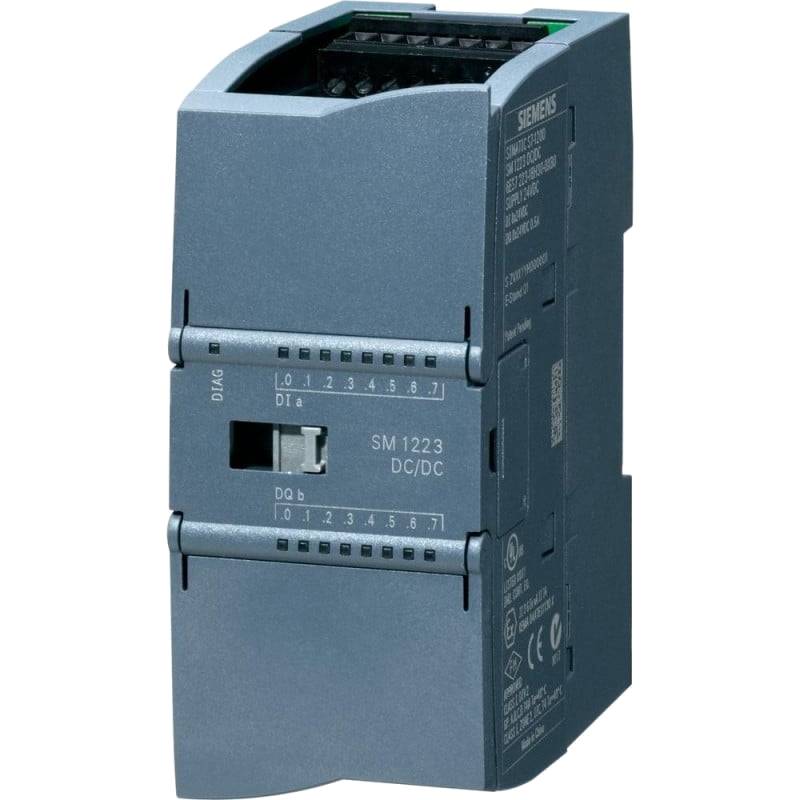
The Siemens 5SU9356-1KK20 RCBO delivers robust circuit protection for demanding industrial environments, combining overcurrent and earth leakage functions in a single, compact unit. This 20A, 30mA, 1P+N (Single Pole + Neutral) device ensures superior safety and operational reliability, distinguishing itself with its high breaking capacity and rapid fault tripping. Its Type C tripping characteristic makes it ideal for applications with moderate inrush currents, such as motors and lighting systems.
Product Specifications
| Feature | Specification |
| :---------------------- | :-------------------------------- |
| Product Type | RCBO (Residual Current Circuit Breaker with Overcurrent Protection) |
| Manufacturer | Siemens |
| Model Number | 5SU9356-1KK20 |
| Rated Current (In) | 20 A |
| Rated Residual Current | 30 mA |
| Number of Poles | 1P+N (Single Pole + Neutral) |
| Tripping Characteristic | Type C |
| Rated Voltage (Ue) | 230/240 V AC |
| Rated Breaking Capacity | 6 kA |
| Frequency | 50/60 Hz |
| Terminal Type | Screw Terminals |
| Mounting Type | DIN Rail |
| Protection Class | IP20 |
| Standards Compliance | IEC/EN 61009-1, IEC/EN 60898-1 |
Core Features & Market Positioning
The Siemens 5SU9356-1KK20 RCBO stands out in the competitive landscape by offering a highly integrated solution for electrical safety. Its primary advantage lies in its dual-functionality, reducing panel space and installation complexity compared to separate overcurrent protection and RCD devices. The Type C tripping curve provides a critical advantage for industrial applications where inductive loads, such as small motors or transformers, can cause nuisance tripping with standard Type B curves. This RCBO's robust construction and adherence to stringent international standards like IEC/EN 61009-1 underscore its reliability and suitability for professional installations. Siemens' reputation for quality and innovation further solidifies the 5SU9356-1KK20's position as a trusted choice for electricians and system designers prioritizing safety and performance.
Key Application Scenarios
This Siemens 5SU9356-1KK20 RCBO is engineered for a wide array of industrial and commercial applications where both overcurrent and residual current protection are mandated. It is particularly well-suited for protecting circuits in manufacturing plants, workshops, and laboratories, safeguarding equipment like machinery, pumps, and control systems from electrical faults and potential shocks. In building services, it offers essential protection for lighting circuits, socket outlets, and HVAC systems, ensuring the safety of personnel and preventing equipment damage. Its Type C characteristic makes it ideal for circuits with moderate inrush currents, commonly encountered in motor control applications or areas with significant lighting loads, preventing unwanted trips while maintaining sensitive earth fault detection.
Practical System Integration Guidance
Integrating the Siemens 5SU9356-1KK20 RCBO into an electrical system is a straightforward process, adhering to standard DIN rail mounting practices. Ensure the incoming power supply lines are correctly identified and connected to the appropriate terminals on the RCBO, typically with line power to the top and load to the bottom. The neutral conductor must also be connected to its designated terminal. It is imperative to verify that the incoming voltage and frequency align with the device's specifications (230/240 V AC, 50/60 Hz) and that the circuit's anticipated load does not exceed the 20A rating. Proper torque must be applied to the terminals to ensure secure connections and prevent overheating.
Operation and Risk Mitigation
Operating the Siemens 5SU9356-1KK20 RCBO involves regular testing of its earth leakage protection function using the integrated test button. This test should be performed periodically, as recommended by local electrical codes and safety standards, to confirm the 30mA residual current device is functioning correctly. In the event of a fault, the RCBO will trip, simultaneously interrupting both the line and neutral conductors to safely isolate the circuit. Understanding that a tripped RCBO indicates an electrical fault is crucial; immediately identify and rectify the cause of the trip before resetting the device. Common causes include overloads, short circuits, or insulation failures leading to earth leakage.
Scalability & Long-Term Value
The Siemens 5SU9356-1KK20 RCBO is designed for seamless integration within Siemens' broader electrical distribution systems, offering significant long-term value. Its compatibility with other components from the Siemens SENTRON series ensures straightforward expansion and modification of electrical panels. For facilities looking towards digitalization, this RCBO can be part of a larger smart electrical infrastructure when paired with compatible monitoring and communication modules, enabling remote diagnostics and predictive maintenance capabilities. This ensures that your protective devices evolve with your facility's needs, contributing to operational efficiency and reduced downtime over the equipment's lifecycle.
Frequently Asked Questions
What is the primary function of the Siemens 5SU9356-1KK20 RCBO?
The Siemens 5SU9356-1KK20 RCBO provides combined overcurrent and earth leakage protection. It safeguards circuits against damaging overloads and short circuits. It also protects personnel and property from electrical shocks due to insulation failures.
This device offers a single-pole and neutral configuration for efficient circuit isolation. Its compact design saves valuable panel space. It meets stringent safety standards, ensuring reliable performance.
The RCBO is essential for modern electrical installations requiring comprehensive safety measures. It significantly reduces the risk of electrical fires and equipment damage.
Can the Siemens 5SU9356-1KK20 be used for motor starting applications?
Yes, the Siemens 5SU9356-1KK20 features a Type C tripping characteristic. This curve is specifically designed to tolerate moderate inrush currents associated with motor startups. It helps prevent nuisance tripping during motor energization.
However, it's crucial to ensure the motor's starting current and duration fall within the RCBO's Type C parameters. Consult the motor's datasheet for specific inrush current information. For very large motors with high inrush, alternative protection strategies might be needed.
Always confirm that the total circuit load, including the motor and other connected equipment, does not exceed the RCBO's 20A rating. Proper sizing is key to reliable operation.
How do I test the residual current detection on the 5SU9356-1KK20?
The Siemens 5SU9356-1KK20 is equipped with a test button, typically marked 'T'. Pressing this button simulates a residual current fault condition. This action should immediately trip the RCBO, disconnecting the power.
Regular testing is vital to ensure the earth leakage protection remains functional. It is recommended to perform these tests monthly or as per local electrical codes. Always reset the device manually after a successful test.
If the RCBO fails to trip during the test, it indicates a malfunction. The device must be replaced immediately to maintain safety standards. Never bypass the residual current protection function.























